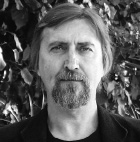It is a changing reality

When I go to a digital substation today, I see something completely different from the substations I’ve been to since the start of my career so many years ago. And it is different because of all the developments in power system protection.
The world around us has changed and we have changed as well. In our everyday lives we cannot imagine a world without communications and easy, high-speed access to any information that we may need. It is an amazing process to watch, because it is a constant race between what we have and the more we want.
And the same applies to the worlds of electric power systems in general and electric power system protection specifically.
The electric power systems of the last century were simple – we had large synchronous generators in power plants connected to the transmission system transferring their power to the load centers.
There we had the substations connecting to radial distribution feeders bringing the power to the customers. We had plenty of fault current and we understood DC offset and CT saturation.
The same was true about power system protection. On the transmission lines we typically had three zones of distance protection and from time to time line differential protection or a Permissive Overreaching Transfer Trip protection scheme. It is true that sometimes we had to worry about dynamic stability, but we knew how to deal with it.
On the distribution feeders it was also simple – time coordinated non-directional phase and ground overcurrent protection. It was not a big deal that many times it will take multiple seconds to clear a fault and it was not such a big problem if there was a couple of hours outage.
That was pretty much it. Life was beautiful!!
And look at it today. What a mess – instead of synchronous machines we have these inverters based distributed renewable energy resources that who knows when and how much power they will deliver. Then if there is a fault, they do not provide fault current, so the overcurrent protection doesn’t work. But at the same time, we now need to clear faults faster because of ride-through and power quality requirements. And only the designer knows what the dynamic behavior that he programmed in the inverter controller is.
The only solutions to all these problems can be based on the developments in electric power system protection. Instead of the traditional single function electromechanical protection relays today we have multifunctional adaptive protection Intelligent Electronic Devices (IEDs), we have travelling waves detection, we have synchrophasor measurements, accurate time synchronization and IEC 61850.
GOOSE messages or sampled values in the substation or over wide area networks allow significantly improving the speed of local or distributed protection systems and reducing the fault clearing time to meet the power quality or ride-through requirements.
So instead of complaining about the challenges of this new reality we need to accept it as it is. We need to look at all the amazing new computer and communications technology available to us, combine it with everything that IEC 61850 allows us to do and further develop the new protection model that is changing our industry.
“You never change things by fighting the existing reality.
To change something, build a new model that makes the existing model obsolete.”
Buckminster Fuller








